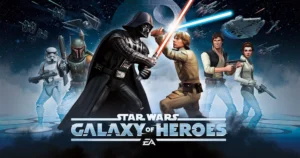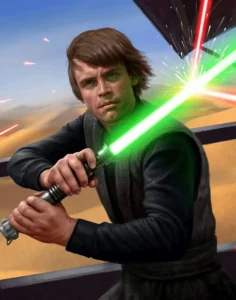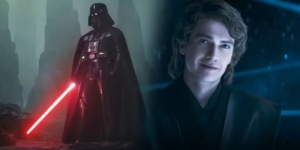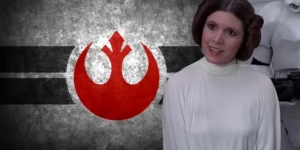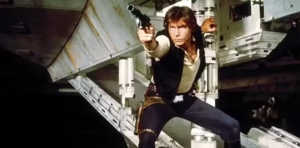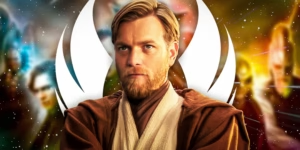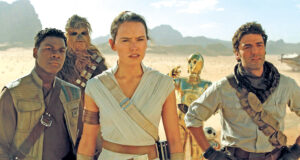“A long time ago in a galaxy far, far away…” — with these iconic words, Star Wars opened a universe where heroes rise, villains fall, and destinies collide. For more than four decades, the saga has introduced characters who transcend fiction, becoming cultural legends.
From the humble Luke Skywalker to the fearsome Darth Vader, each figure holds a piece of the larger galactic puzzle. As Disney continues to expand the universe with new movies and shows, Star Wars remains a dominant force in pop culture. But what makes these characters timeless? Why have some movies become blockbusters while others faltered? In this deep dive, we’ll explore the characters’ stories, earnings, and the reasons behind their global success — or rare stumbles.
The Heroes and Villains That Define a Galaxy: The Farm Boy Who Became a Legend
First appearing in Episode IV: A New Hope (1977), Luke Skywalker starts as a simple farm boy on Tatooine. His journey from innocence to Jedi Master symbolizes hope and growth. Across The Empire Strikes Back and Return of the Jedi, Luke confronts his fears, redeems his fallen father, and restores balance to the Force. Mark Hamill’s portrayal made Luke the quintessential hero archetype.
In the sequel trilogy (The Last Jedi and The Rise of Skywalker), Luke’s character evolves into a reluctant mentor, sparking debates among fans. Despite controversies, his legacy endures as a beacon of resilience.
Darth Vader (Anakin Skywalker): The Fallen Hero
Few villains have captured the world’s imagination like Darth Vader. Born as Anakin Skywalker in The Phantom Menace, his tragic descent into darkness spans the prequels (Attack of the Clones and Revenge of the Sith). As Vader, he embodies fear and power, with his iconic breathing and red lightsaber becoming symbols of villainy.
Yet, it’s his redemption in Return of the Jedi—when he saves his son Luke—that adds depth, transforming him from a mere antagonist to a tragic hero. Vader’s appearances in Rogue One and Obi-Wan Kenobi only reinforced his status as cinema’s ultimate villain.
Leia Organa: The Rebel Princess
Leia Organa breaks the mold of damsels in distress. As a leader of the Rebel Alliance, she’s fierce, smart, and compassionate. From A New Hope to The Rise of Skywalker, Leia’s journey from princess to general showcases female strength in a male-dominated era.
Carrie Fisher’s performance made Leia an icon, influencing generations of women. Her final appearance in Episode IX, crafted from unused footage, served as a heartfelt farewell to both the character and the actress.
Han Solo: The Smuggler with a Heart
Han Solo, portrayed by Harrison Ford, is the galaxy’s favorite rogue. His transition from a selfish smuggler in A New Hope to a hero in Return of the Jedi is one of the saga’s most beloved arcs. With his trusty ship, the Millennium Falcon, and loyal co-pilot Chewbacca, Han brought humor and charm to the space opera.
The spin-off Solo: A Star Wars Story explored his origins, though it received mixed reviews and modest box office returns, becoming the franchise’s rare underperformer.
Obi-Wan Kenobi: The Tragic Mentor
Introduced in A New Hope and deeply explored in the prequels, Obi-Wan Kenobi is the Jedi mentor whose choices shape the galaxy’s fate. He trains both Anakin and Luke, only to witness the rise and fall of empires. The recent Obi-Wan Kenobi series on Disney+ revived fan interest, showing his inner conflict and battles after the Jedi Purge.
New Generation: Rey, Kylo Ren, Finn, and Poe
The sequel trilogy brought in fresh faces:
-
Rey: A scavenger who discovers her Force powers and lineage.
-
Kylo Ren: Vader’s conflicted grandson, torn between light and dark.
-
Finn: A stormtrooper turned Resistance fighter.
-
Poe Dameron: The ace pilot with Han Solo’s charisma.
While these characters attracted new fans, they also sparked debates. Some praised Rey’s empowerment, while others criticized the rushed arcs and overuse of nostalgia.
Box Office Earnings and Public Reception: A Financial Force
The Star Wars franchise is a financial juggernaut. Here’s how the major films performed:
-
The Force Awakens (2015): $2.07 billion — the highest-grossing Star Wars film.
-
Rogue One (2016): $1.05 billion — a surprise hit with darker tones.
-
The Last Jedi (2017): $1.33 billion — critically acclaimed but divisive among fans.
-
Solo (2018): $393 million — the lowest-grossing, signaling franchise fatigue.
-
The Rise of Skywalker (2019): $1.07 billion — commercially solid but critically mixed.
The original trilogy (A New Hope, The Empire Strikes Back, Return of the Jedi) dominated the late 70s and early 80s, setting box office records (adjusted for inflation, A New Hope rivals modern blockbusters).
On the small screen, series like The Mandalorian have revived the brand, winning Emmy awards and drawing millions to Disney+.
Why Star Wars Movies Become Blockbusters — or Flops
Reasons for Blockbuster Success:
-
Nostalgia and Legacy
Generations grew up with Star Wars, passing love for the saga down like an heirloom. Every new release taps into this emotional connection. -
Iconic Characters
Figures like Vader, Yoda, and Luke are instantly recognizable worldwide. Their stories resonate because they mirror universal themes of struggle, redemption, and hope. -
Disney’s Marketing Power
Since acquiring Lucasfilm in 2012, Disney’s global machine has ensured massive exposure, from merchandise to theme parks. -
Epic Music and World-Building
John Williams’ scores, combined with the vast galactic lore, create an immersive universe unlike any other.
Reasons for Stumbles:
-
Over-Saturation
Between 2015 and 2019, five movies were released in quick succession. Solo’s underperformance signaled audience fatigue. -
Divisive Storytelling
The Last Jedi subverted expectations, pleasing critics but angering hardcore fans. The Rise of Skywalker tried to course-correct, but ended up feeling disjointed. -
Poor Character Arcs
Some fans felt newer characters like Rey and Finn lacked the depth of originals, leading to diminished emotional investment.
Despite occasional missteps, the franchise’s foundation remains solid, thanks to its beloved characters and ever-growing universe.
Final Thoughts: The Enduring Legacy of Star Wars Characters
From Darth Vader’s chilling presence to Luke Skywalker’s hopeful gaze, Star Wars characters have become immortal icons. Their stories, spanning nine main films, spin-offs, and acclaimed series, continue to evolve. With upcoming projects like The Acolyte and Ahsoka, and even more new heroes and villains on the horizon, the galaxy far, far away shows no signs of fading.
Whether it’s breaking box office records or sparking internet debates, one thing remains clear — the force of these characters will always be with us.

